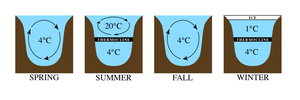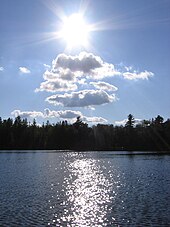
Limnology is the study of inland aquatic ecosystems. The study of limnology includes aspects of the biological, chemical, physical, and geological characteristics of fresh and saline, natural and man-made bodies of water. This includes the study of lakes, reservoirs, ponds, rivers, springs, streams, wetlands, and groundwater. Water systems are often categorized as either running (lotic) or standing (lentic).

Green Lake is the larger of the two lakes in Green Lakes State Park, which lies about 9 miles (14 km) east of downtown Syracuse in Onondaga County, New York. Round Lake is the smaller lake located west of Green Lake. Both lakes are meromictic, which means no seasonal mixing of surface and bottom waters occurs. Meromictic lakes are fairly rare; they have been extensively studied, in part because their sediments can preserve a historical record extending back thousands of years, and because of the euxinic conditions which can form in the deep water.

Lake stratification is the tendency of lakes to form separate and distinct thermal layers during warm weather. Typically stratified lakes show three distinct layers: the epilimnion, comprising the top warm layer; the thermocline, the middle layer, whose depth may change throughout the day; and the colder hypolimnion, extending to the floor of the lake.

A limnic eruption, also known as a lake overturn, is a very rare type of natural disaster in which dissolved carbon dioxide suddenly erupts from deep lake waters, forming a gas cloud capable of asphyxiating wildlife, livestock, and humans. A limnic eruption may also cause tsunamis or seiches as the rising CO2 displaces water. Scientists believe earthquakes, volcanic activity, and other explosive events can serve as triggers for limnic eruptions. Lakes in which such activity occurs are referred to as limnically active lakes or exploding lakes. Some features of limnically active lakes include:

Colored dissolved organic matter (CDOM) is the optically measurable component of dissolved organic matter in water. Also known as chromophoric dissolved organic matter, yellow substance, and gelbstoff, CDOM occurs naturally in aquatic environments and is a complex mixture of many hundreds to thousands of individual, unique organic matter molecules, which are primarily leached from decaying detritus and organic matter. CDOM most strongly absorbs short wavelength light ranging from blue to ultraviolet, whereas pure water absorbs longer wavelength red light. Therefore, water with little or no CDOM, such as the open ocean, appears blue. Waters containing high amounts of CDOM can range from brown, as in many rivers, to yellow and yellow-brown in coastal waters. In general, CDOM concentrations are much higher in fresh waters and estuaries than in the open ocean, though concentrations are highly variable, as is the estimated contribution of CDOM to the total dissolved organic matter pool.
A dimictic lake is a body of freshwater whose difference in temperature between surface and bottom layers becomes negligible twice per year, allowing all strata of the lake's water to circulate vertically. All dimictic lakes are also considered holomictic, a category which includes all lakes which mix one or more times per year. During winter, dimictic lakes are covered by a layer of ice, creating a cold layer at the surface, a slightly warmer layer beneath the ice, and a still-warmer unfrozen bottom layer, while during summer, the same temperature-derived density differences separate the warm surface waters, from the colder bottom waters. In the spring and fall, these temperature differences briefly disappear, and the body of water overturns and circulates from top to bottom. Such lakes are common in mid-latitude regions with temperate climates.
Monomictic lakes are holomictic lakes that mix from top to bottom during one mixing period each year. Monomictic lakes may be subdivided into cold and warm types.
Polymictic lakes are holomictic lakes that are too shallow to develop thermal stratification; thus, their waters can mix from top to bottom throughout the ice-free period. Polymictic lakes can be divided into cold polymictic lakes, and warm polymictic lakes. While such lakes are well-mixed on average, during low-wind periods, weak and ephemeral stratification can often develop.
Holomictic lakes are lakes that have a uniform temperature and density from surface to bottom at a specific time during the year, which allows the lake waters to mix in the absence of stratification.
A chemocline is a type of cline, a layer of fluid with different properties, characterized by a strong, vertical chemistry gradient within a body of water. In bodies of water where chemoclines occur, the cline separates the upper and lower layers, resulting in different properties for those layers. The lower layer shows a change in the concentration of dissolved gases and solids compared to the upper layer.
The deep chlorophyll maximum (DCM), also called the subsurface chlorophyll maximum, is the region below the surface of water with the maximum concentration of chlorophyll. The DCM generally exists at the same depth as the nutricline, the region of the ocean where the greatest change in the nutrient concentration occurs with depth.
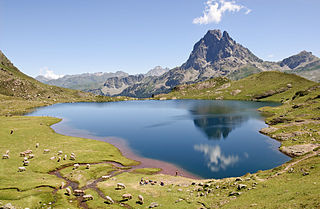
A lake is a naturally occurring, relatively large and fixed body of water on the Earth's surface. It is localized in a basin or interconnected basins surrounded by dry land. Lakes lie completely on land and are separate from the ocean, although they may be connected with the ocean by rivers, such as Lake Ontario. Most lakes are freshwater and account for almost all the world's surface freshwater, but some are salt lakes with salinities even higher than that of seawater. Lakes vary significantly in surface area and volume.
Solar Lake is a saline desert lake located on the edge of the Red Sea, about 18 km south of Eilat in the Sinai Peninsula, Taba, Egypt, close to its borders with Israel. A small lake of high salinity, it is the site of complex biochemical phenomena, linked to cycles of evaporation and of infiltration of waters.
Euxinia or euxinic conditions occur when water is both anoxic and sulfidic. This means that there is no oxygen (O2) and a raised level of free hydrogen sulfide (H2S). Euxinic bodies of water are frequently strongly stratified; have an oxic, highly productive, thin surface layer; and have anoxic, sulfidic bottom water. The word "euxinia" is derived from the Greek name for the Black Sea (Εὔξεινος Πόντος (Euxeinos Pontos)) which translates to "hospitable sea". Euxinic deep water is a key component of the Canfield ocean, a model of oceans during part of the Proterozoic eon (a part specifically known as the Boring Billion) proposed by Donald Canfield, an American geologist, in 1998. There is still debate within the scientific community on both the duration and frequency of euxinic conditions in the ancient oceans. Euxinia is relatively rare in modern bodies of water, but does still happen in places like the Black Sea and certain fjords.

Lake metabolism represents a lake's balance between carbon fixation and biological carbon oxidation. Whole-lake metabolism includes the carbon fixation and oxidation from all organism within the lake, from bacteria to fishes, and is typically estimated by measuring changes in dissolved oxygen or carbon dioxide throughout the day.
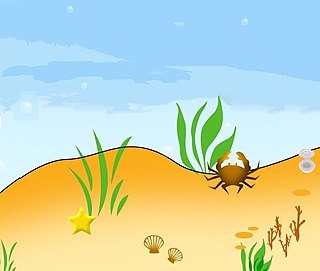
Benthic-pelagic coupling are processes that connect the benthic zone and the pelagic zone through the exchange of energy, mass, or nutrients. These processes play a prominent role in both freshwater and marine ecosystems and are influenced by a number of chemical, biological, and physical forces that are crucial to functions from nutrient cycling to energy transfer in food webs.

A marl lake is a type of alkaline lake whose bottom sediments include large deposits of marl, a mixture of clay and carbonate minerals. The term is particularly applied to lakes that have been dredged or mined for marl, often for manufacturing Portland cement.
Yvette Hardman Edmondson was the editor of Limnology and Oceanography the premier journal of the Association for the Sciences of Limnology and Oceanography and was an aquatic scientist known for her research on bacteria in aquatic systems.

Lake Lacawac is located at the very middle of Lacawac's Sanctuary Field Station in Pennsylvania and has been deemed the "southernmost unpolluted glacial lake in North America." Lake Lacawac has proven to be invaluable to researchers and students to conduct field experiments in order to learn more about the limnology of the lake.
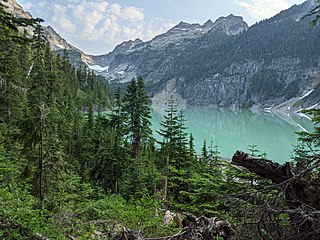
An alpine lake is a high-altitude lake in a mountainous area, usually near or above the tree line, with extended periods of ice cover. These lakes are commonly glacial lakes formed from glacial activity but can also be formed from geological processes such as volcanic activity or landslides. Many alpine lakes that are fed from glacial meltwater have the characteristic bright turquoise green color as a result of glacial flour, suspended minerals derived from a glacier scouring the bedrock. When active glaciers are not supplying water to the lake, such as a majority of Rocky Mountains alpine lakes in the United States, the lakes may still be bright blue due to the lack of algal growth resulting from cold temperatures, lack of nutrient run-off from surrounding land, and lack of sediment input. The coloration and mountain locations of alpine lakes attract lots of recreational activity.


